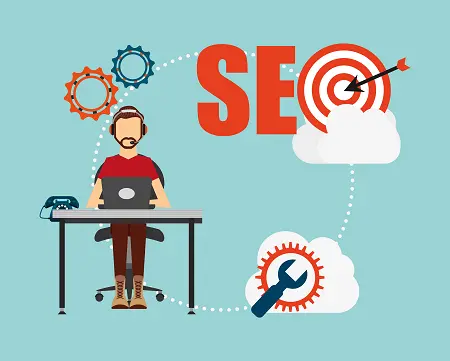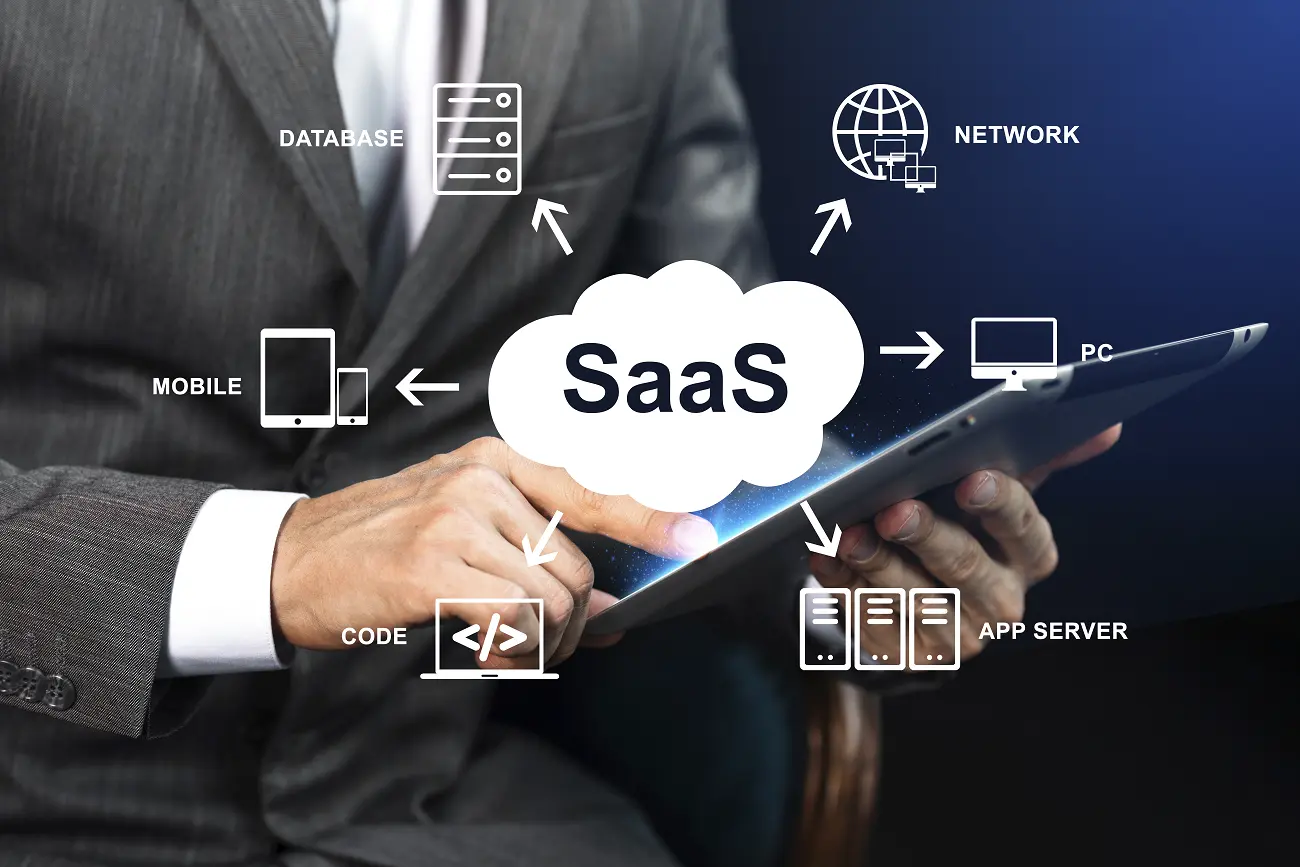Do you know, what is the nightmare of SaaS (Software as a service) companies? It is none other than, Higher Customer Acquisition Cost (CAC). Many marketers first grasp paid campaigns and influencer marketing in an attempt to increase engagement rates. The only stability in this volatile field will come from organic growth.
On the other hand, when your content is strong and creative, organic growth charts surpass paid campaigns in importance. So, let’s take a ride toward effective content marketing strategies in today’s most saturated market, SaaS.
Table of Contents
What is SaaS Content Marketing?
SaaS content marketing is a long-term approach to filling your qualified audience into a sales funnel through valued content.
No need to realize, how much content matters these days—without it, social media and search engines are useless. In 2023’s sudden shift was revealed due to economic instability and the rise of generative AI.
This growing yet saturated industry has a powerful weapon is how to be more creative to present yourself through content. Squeeze your brain for the last creative drop that reaches you to the top, or gain more engaged followers.
Every SaaS platform is unique and always seeking technology-focused development. Developers for features, designers for aesthetics, project managers for coordination, and digital marketers to educate customers are the four key roles that SaaS companies depend on to succeed. The more inventively you can operate, the more quickly you will expand.
Prior to moving on, let me go over 5 must-haves for SaaS content marketing:
- In-depth knowledge of your target audience.
- Unique brand narrative, to outline your brand background story and the mission you hope to achieve.
- Consistency in showing your USP (unique selling points) in every brand message.
- Creative and concise content that educates them, highlights their pain points, and engages.
- Effective distribution and omnichannel strategy
What is the Difference between SaaS Content Marketing and Traditional Marketing?
Approach, products, strategies, customer support, and even sales are the core differences here.
Let’s go through the differences more elaborately!
Core Focus: Education vs. Promotion

SaaS content marketing is mostly involves business-to-business (B2B), and business-to-consumer (B2C) to promote and sell subscription-based products. Here, you need to crack search engine through digital marketing. So most SaaS content marketers focus on educating and providing value to potential clients. Blogposts, tutorials, webinars, and social media reels, are the weapons. It addresses pain points, offers solutions, and showcases the expertise of the SaaS provider.
On the other hand, traditional marketing tends to be more promotional in nature. It aims to directly sell products or services through advertising, sales promotions, and other traditional channels like billboards, TV advertisements, and so on.
Marketing: Inbound vs. Outbound
SaaS content marketing follows the principle of magnetic attraction. Instead of pursuing prospects with invasive cold calls or flooding mailboxes, it draws them in organically. This is because, SaaS inbound strategy builds relationships, and establishes the company as a trusted advisor rather than a mere sales pitch.
Traditional marketing throws a wide net, using outbound tactics like TV ads or cold calls, hoping to catch a few customers. But in today’s world of ad-blockers and caller ID, it’s the inbound charm of SaaS content marketing that really grabs attention and turns prospects into customers.
Follow Different Sales Funnel
SaaS companies leverage the AAARRR framework, or pirate funnel, as their growth hacker. As you know, content nurturing leads throughout the buyer’s journey, from awareness to consideration to decision-making. These six pirate metrics identify the holes that hold customers back from converting. AAARRR stands for-
- Awareness: Ramp up promotion efforts to expand your client base.
- Acquisition: Optimize your website with proper SEO and other digital marketing efforts
- Activation: Refine key features to captivate users.
- Retention: Cultivate engagement to increase customer satisfaction and loyalty.
- Revenue: Implement a premium offer and precise pricing plan.
- Referral: Offer enticing incentives to encourage customer spread your word and service
Contrarily, Traditional Marketing funnel differs from the AAARRR funnel as it emphasizes not just lead generation, but also customer retention and monetization post-purchase. It extends throughout the entire lifecycle after the initial sale, ensuring ongoing engagement and profitability.
Data-driven Insights and Measurable Outcomes
SaaS content marketing relies heavily on data and analytics, utilizing tools like Google Analytics and CRM systems (Hubspot, Salesforce, Zoho, and Zendesk) to track user engagement and campaign effectiveness.
Like, for example, your SaaS company running an email campaign. With analytics, you can see exactly how many recipients opened the email, clicked on links, and converted into customers. These fine-grained insights can help you optimize strategies over time.
In contrast, traditional marketing methods like print ads offer less detailed tracking, making it harder to measure ROI accurately. Even, sometimes, traditional marketing campaigns often require more time and resources to implement changes and adjustments.
How to Map Out Your Content Marketing Strategies for SaaS Companies
A strong content strategy is a must to compete in the tech-service industry, as according to HubSpot, 70% of marketers are actively investing in content marketing. So we have taken you down a path of solid facts that will help you map out your content for SaaS companies.
Spare no effort for Customer Analysis

Knowing your customer journey will lead you to address your customer’s pain points and obtain their profile to strategize your next, more powerful steps. Mostly, your customer-centric content marketing approach drives you towards sustainable yet organic growth.
Start with the source of CRM (customer relationship management) platforms like Salesforce, HubSpot, and Zendesk, the already existing customer data. Then do segmentation according to customer behaviour, geographic demand, consumption, and even demographics. Those can be helpful for fictionalizing your buyer personas and determining which path you should choose.
Stay focused with your Brand Story
In SaaS marketing, you require in-depth knowledge of the messages you want to deliver, and must align with every channel. People love to listen stories. So create characters, portray settings, create conflicts that relate to your audience, and even create the climax in which customers connect with you emotionally.
However, at first, do user surveys like social listening that help shape your strong brand story. Of course, don’t forget to narrow down the purpose of the story and what you’re trying to accomplish in few sentences in your climax.
Set Content Marketing Goals
SaaS marketing focuses mostly on brand awareness, lead generation, website traffic, and generating recurring revenue. Let’s say you want recurring revenues, so you want to satisfy your conversion prospects with high-quality customer support and continuous interactions. So that they can be your advocates by referring to your platforms.
You can also try reverse engineering for your content marketing. Targeting prospects in the decision stage is advantageous not only because they are the low-hanging fruit but also because it directly impacts the KPI of trial conversion rates. It aligns with the overarching business goal of increasing revenue.
Crack the SEO for Search Engine

SaaS SEO is what scales your business’s organic growth exponentially. Because when you’ve got organic traffic, that means visitors are interested in connecting with your business and offerings.
As you create more content, your website will rank higher for more keywords. So that you can attract more traffic from different regions, countries, and languages. That will expand your customer base and increase your global presence. It reduces your customer acquisition costs (CAC) and increases customer lifetime value (CLV)
Don’t forget to utilize Social Media
Social media is a powerful weapon to promote your content with better engagement. Based on a review of multiple social media accounts, it appears that Twitter (368 million), Instagram (2.4 billion), and Facebook (over 2 billion) are the most popular platforms for SaaS engagement. LinkedIn (1 billion) is also the best platform to promote your SaaS platforms.
You can notify your targeted audiences about any updates or promotions. Even you can generate curiosity, utilize SaaS social media campaigns, and build a community for early SaaS adopters. The more you show your content, the more your SaaS products are promoted.
Final Thoughts
SaaS product users are critical to keeping them longer. If you are crafty and creative with your content marketing, that will drag your customers to the decision making stage.
Assemble a creative team and use them to implement effective content strategies to reach your objectives and cut costs.
Good Luck!


